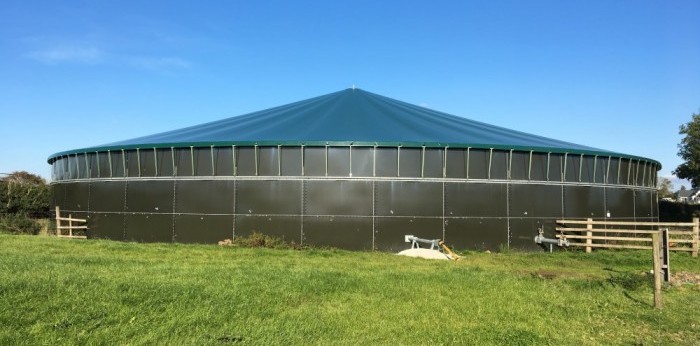The second round of the Slurry Infrastructure Grant scheme, which will open in November, will be more accessible to pig farmers, with some significant changes made, including funding for up to eight months of storage.
Defra has published full guidance for the scheme, which will offer grants of between £25,000 and £250,000 to improve slurry storage in England. The grants are intended to take slurry storage arrangements beyond legal minimums, with the aim of improving the use of organic nutrients on farm to aid productivity and reduce pollution.
Five changes have been made that make the scheme significantly more accessible to pig farmers than last year’s first round. These were based on industry feedback gathered by Defra.
Storage capacity: The most significant change is that pig farms will now be funded for up to eight months storage, compared with six months in round 1. Many pig farmers already have six months of storage, so this will open up the scheme more widely within the sector.
Those who applied for six months of storage in round 1 will be able to increase to eight months. Defra said this will help pig producers with less land to safely store organic nutrients until they can safely spread it or export it to neighbouring farms to meet crop and soil needs.
Cattle farmers will still be offered funding to achieve 6 months slurry storage.
Slurry separators: Grant funding is now available towards a slurry separator as part of projects to increase storage capacity. The grant will provide a contribution towards a screw or screen press separator unit, gantry, and temporary storage of stackable materials.
Defra said separators can make slurry easier to store, move around the farm and apply in line with a nutrient management plan.
Impermeable covers: Support will also be available for covering for existing stores that are fit-for-purpose with impermeable covers. This option can be used alongside building a store, or on its own, as long as you meet scheme storage requirements and minimum grant thresholds.
Defra said this will help farms who have recently invested in storage to further increase capacity by preventing rainwater from entering the store.
Concrete stores: Defra has added the option of in-situ cast concrete stores as an alternative to circular and panel stores, lagoons and bags, with the aim of improving flexibility in certain areas where it is harder to transport in pre-cast panels.
Underwriting agreements: An option for landlords to underwrite grant funding agreements has been added to give tenants more confidence to apply, where their landlord agrees to take over their agreement if they don’t complete the project.
Defra said it was making these changes to improve flexibility and environmental outcomes, adding that it appreciated that some farms may want to amend their round 1 application to take advantage of the revised offer. RPA will contact round 1 applicants with a time-limited opportunity to update their application if they want to include these changes in their project, without having to reapply.
Defra is not planning to make further changes to the items on offer for round 3.
Managing demand
Applications open in November. Also in November, producers will be able to view the priority areas by selecting Slurry Infrastructure Grant – Round 2 (England) on MAGIC. In the updated guidance, Defra explains how the priority areas will work.
Defra is expecting to invite ‘many more’ projects to submit a full application than last year. However, depending on how many farms apply, it may still need to limit the number of full applications to prevent swamping suppliers.
“If we need to, we will prioritise projects in areas where coordinated action is needed to reduce water and air pollution from farming. This will ensure available public money is targeted to areas where it can make the biggest improvement to environmental outcomes,” it said.
Last year, around 30% of projects shortlisted were outside the prioritised areas.
“We therefore strongly encourage everyone who wants a grant to submit an expression of interest when online applications open, wherever you are located,” Defra said.
“Shortly after that, we’ll tell everyone whether they will be invited to submit a full application this round or not.”
If you aren’t shortlisted, there will be another opportunity to apply in 2024, where we will look to further widen the target areas.
You can get ready to apply by working out how much slurry storage you need to reach the scheme storage requirements. You must use AHDB’s latest version of slurry wizard, which has been significantly updated based on last year’s farmer experience.
Find out more
- Full scheme guidance HERE
- A Defra blog on the grants HERE
- Guidance on using a mechanical slurry separator to manage slurry HERE
- Defra will also be hosting a webinar about the scheme on November 9, with farmers able to put your questions to Defra, RPA and the Environment Agency. Click here to register.
Reaction
NPA chief executive Lizzie Wilson welcomed the announcement. “These grants will provide useful funding for pig producers to help improve slurry storage. We are really pleased the storage has been increased to eight months as this brings many more pig farmers into play.
“We were involved in the development of the scheme and, while we didn’t get everything we wanted – for example, we pushed hard for more storage capacity and permeable as well as impermeable covers – this is a real improvement for pig farmers on round 1.
“We urge members to look at the guidance and consider applying if you think it could help your business. Please, don’t be put off by the priority areas – just apply!”




